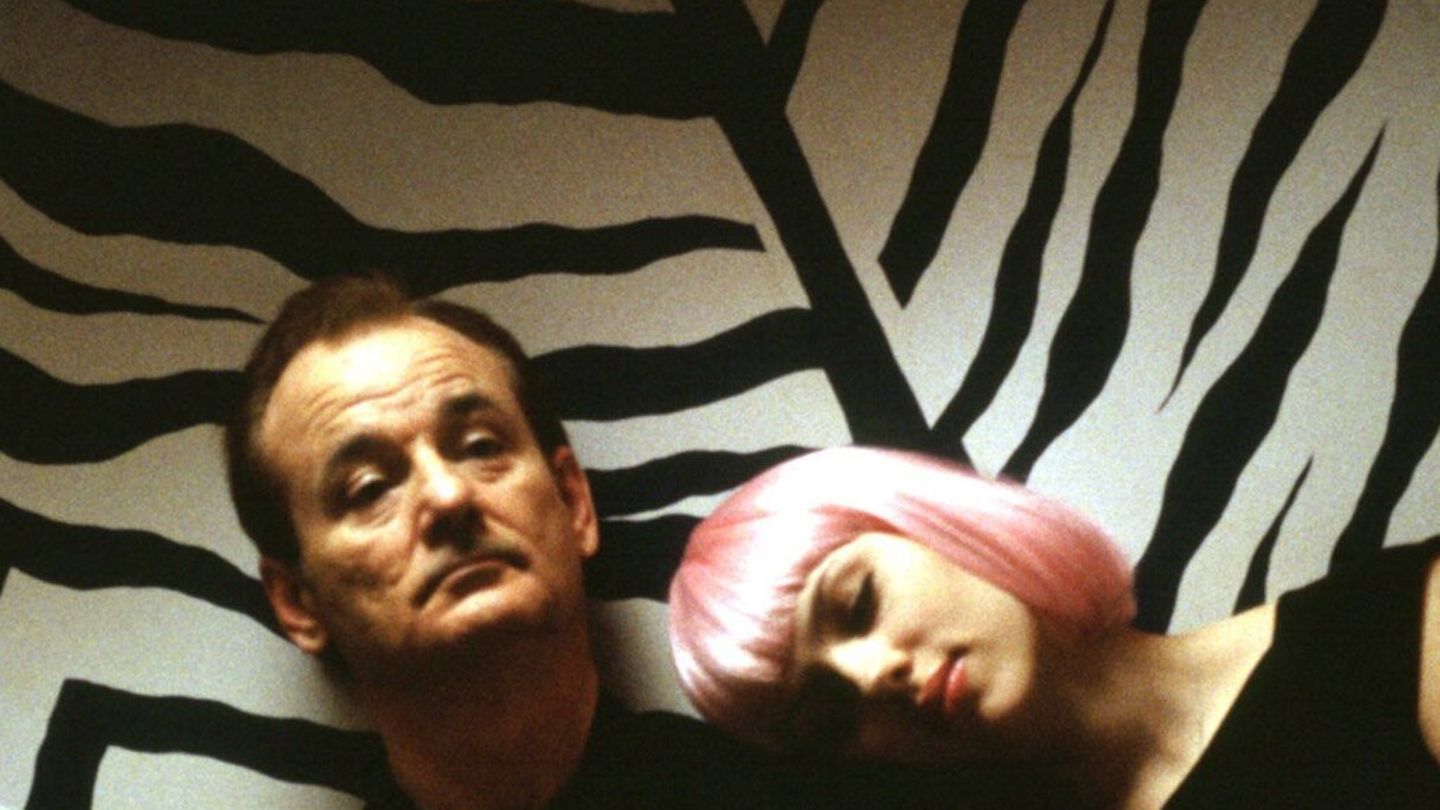“Lost in Translation” was released in US cinemas 20 years ago. A look back at Sofia Coppola’s enchanting Japanese masterpiece.
In Sofia Coppola’s, 52, timeless film classic “Lost in Translation,” comedy legend Bill Murray, 72, wants to make a quick buck in Japan as washed-up actor Bob Harris. He is said to receive an easy salary of two million US dollars for his advertising appearances as the face of the whiskey brand Suntory.
Legend has it that actor Murray borrowed his self-loathing facial expression for the promotional shots within the film’s world from cinema icon Harrison Ford, 81. His likeness could be seen all over Tokyo on posters for the Asahi beer brand as Murray in September 2002 arrived in the Japanese capital for the filming of the romantic tragicomedy.
“Lost in Translation”: Two lost souls united in jet lag
The rather minimalist story of Coppola’s second feature film directorial work after “The Virgin Suicides” (1999) is basically told quickly: two Americans – the aforementioned film star Bob Harris and the 22-year-old philosophy graduate Charlotte (Scarlett Johansson, 38 ) – stay at the posh Park Hyatt Hotel in Tokyo and suffer from insomnia.
This is how the paths of the unhappy, melancholic older man, who is probably in a kind of midlife crisis, cross, and the highly intelligent and beautiful young woman who feels neglected by her successful, constantly working photographer husband, and also after her is looking for your own career path in life.
Charlotte and Bob get along great from the start. As a result, they kill time together in a place that is unfamiliar to them. They drift through Tokyo at night, occasionally meeting the local Charlie Brown (Fumihiro Hayashi, 1964-2011, who unfortunately died far too early) or having conversations about life, Charlotte’s future or other existential topics.
They fall in love with each other a little, but their romantic affair never becomes physical, apart from a little goodbye kiss. So, after about a week, Charlotte and Bob’s exceptional situation in the Japanese bubble ends. In all likelihood, both protagonists will return to their respective everyday lives in the United States.
Sofia Coppola created a monument to “her” Japan
The not-so-secret star – alongside the famous leading actors Johansson and Murray – in “Lost in Translation” is the country of Japan itself and its capital, the futuristic-looking mega-city Tokyo. Director Coppola, the only daughter of the great New Hollywood auteur Francis Ford Coppola, 84, spent according to his own words She spent a lot of time in the East Asian country before the idea for “Lost in Translation” came to fruition.
What fascinated her about Tokyo was the mix of a “modern Blade Runner city” and the enchanting Japanese tradition. She then lets her characters explore these two opposing sides of the country extensively. It goes to karaoke bars, strip clubs, ancient temples and modern video game arcades.
Coppola wrote the role of Bob specifically for comedian Murray. Fortunately, the star of such unforgettable masterpieces as “Groundhog Day” (1993) or “Ghostbusters” (1984) agreed – and was inspired for his portrayal of the kind-hearted curmudgeon Bob by his own experience in Japan.
“It’s almost like you’re being held captive somewhere. You feel like you’re being tortured because you can’t sleep when you want to sleep. You go to work and you’re constantly tired at work, and then you go Home and can’t sleep. It goes like this for weeks,” Murray once described to the British “Guardian” his own experiences during the filming of the film, which coincide with those of his character Bob.
“Lost in Translation” made Scarlett Johansson a mega-star
While “Lost in Translation” is one of the few films in which Bill Murray was able to fully exploit his tragicomic comedy talent, Coppola’s masterpiece gave Scarlett Johansson, who only came of age after filming was completed, her big international breakthrough. Previously, the New York native had only been noticed in supporting roles in indie productions such as “Ghost World” (2001) or the Coen Brothers film “The Man Who Wasn’t There” (2001).
She then went from success to success in works such as “Match Point” (2005), “Vicky Cristina Barcelona” (2008) or her acclaimed performances in the Marvel Cinematic Universe – and became one of the most distinguished and best-paid actresses of our time.
From today’s perspective, her character Charlotte is certainly not entirely unproblematic. With no discernible goal in life, she travels to Japan with her working husband, listens to a crazy self-actualization audio book in the hotel room in her free time, and is – at least so it seems – saved a bit by an older, more experienced man.
And yet: For 20 years now, since the US theatrical release of “Lost in Translation” on September 12, 2003, viewers have not been able to escape the peculiar, tender connection between the lost souls Charlotte and Bob in Sofia Coppola’s masterpiece.
